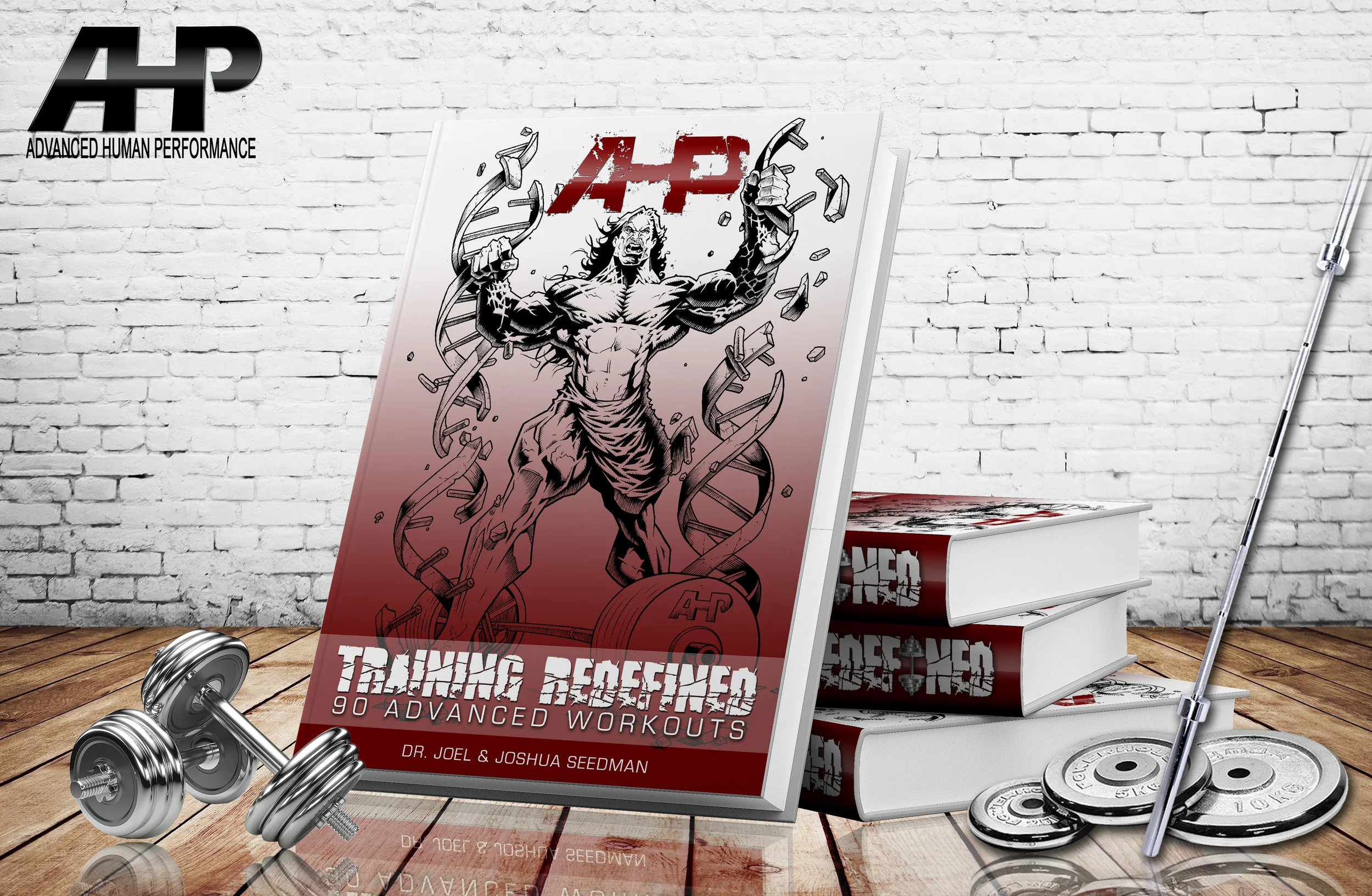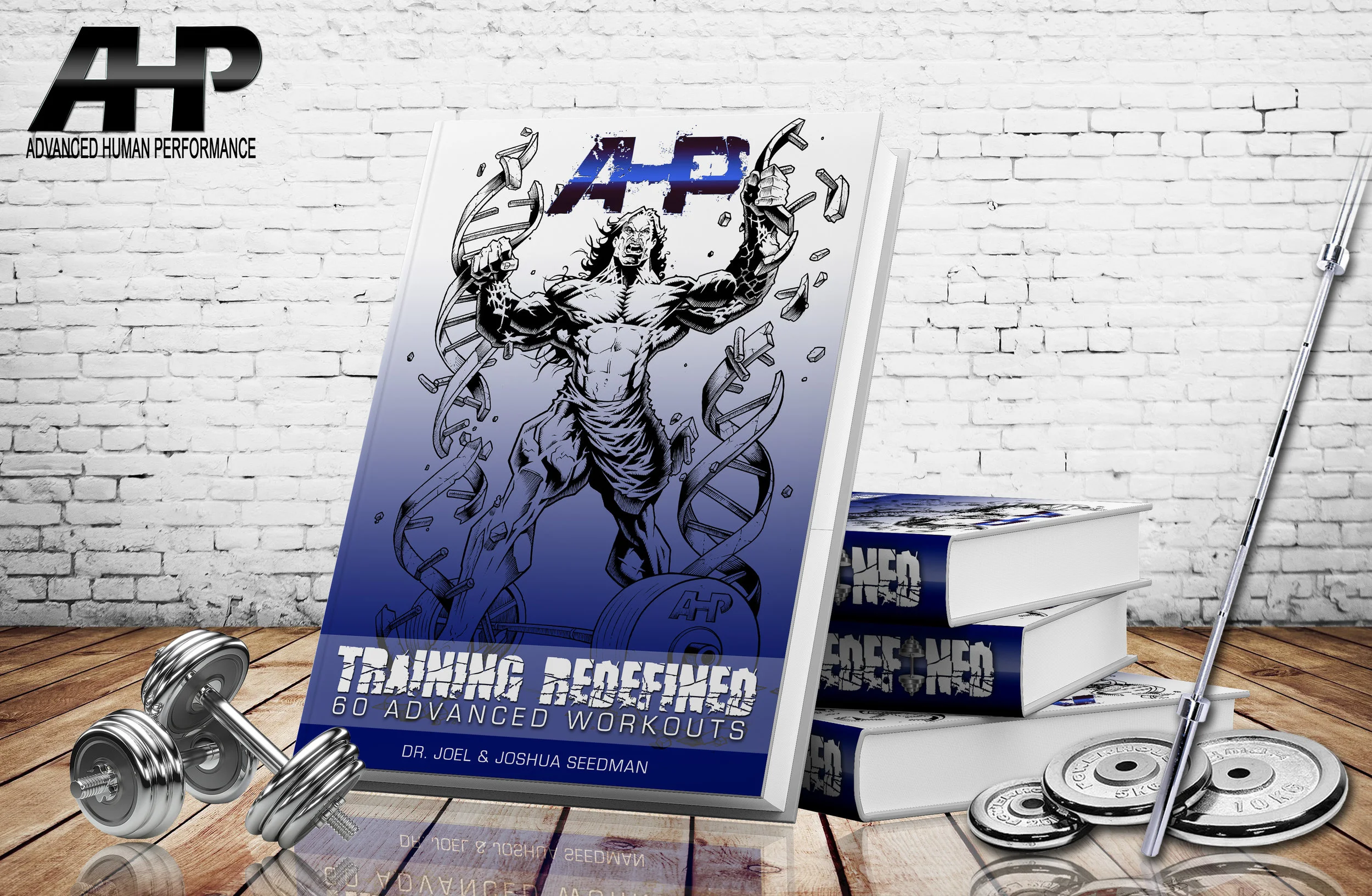Functional Strength and Size with Eccentric Overload Pullovers
Dr. Joel Seedman, Ph.D.
Pullovers and variations thereof are some of the most underrated upper body exercises. Besides improving stability and mobility in the shoulder joint (when performed properly), they also tax nearly every muscle in the upper torso including the lats and upper back, chest, triceps, deltoids, and serratus muscles. In addition, they’re also incredibly effective for working the entire musculature of the abdominals and core as you’re essentially resisting extension forces on the spine as you move from shoulder flexion to extension. In fact, the movement pattern is very similar to an abdominal rollout or stretched plank (i.e. long lever plank). The farther the shoulders move into flexion the greater the extension forces become on the spine that the lifter must resist by firing the entire musculature of the core particularly the rectus abdominals and transverse abs.
Fortunately, each of these benefits can be further enhanced by adding eccentric overload with heavy negatives. In fact, the research is pretty clear on the topic of eccentric overload, demonstrating its effectiveness for inducing incredible gains in functional strength and hypertrophy. With that said here are my top 4 favorite variations for performing eccentric overload pullovers
BANA Kettlebell Pullover
The 2:1 eccentric accentuated protocol also known as the bilateral assisted negative accentuated training protocol (BANA) is one of my favorite eccentric overload methods. Not only does it produce incredible gains in functional strength and hypertrophy, it also very effectively targets each limb individually during the eccentric portion of the lift. Essentially what you’re doing is performing the concentric phase of the lift with 2 limbs and the eccentric phase with 1 limb thereby providing greater eccentric overload during that eccentric or negative movement. Unfortunately, this technique is often limited to machines or cable systems such as seated machine rows, lat pulldowns, leg extensions, leg curls, and chest press machines. However, this same concept can be applied to pullovers using a single kettlebell as I show in the video.
When performing kettlebell pullovers, particularly with one arm, the heaviest weight I’ll use is a 45 pound kettlebell. In this video I’m using a 55 pound kettlebell combined with the BANA protocol thereby providing approximately 20% greater overload than I would typically produce on a pullover.
The bilateral assisted negative accentuated pullover also promotes symmetry throughout the upper torso as each side is individually taxed on the eccentric phase. If you have an upper body imbalance this will both quickly expose and correct it. In fact, the first time you implement this technique you’ll most likely notice a huge variance between sides with one side being significantly stronger. Several workouts using this eccentric accentuated pullover will do wonders for balancing out these issues.
The degree of core activation is unusually high during these for a few reasons. First off the single arm pullover not only taxes the core via anti-extension but it also hits it with an anti-rotation and anti-lateral flexion component due to the offset loading.
Unfortunately you typically sacrifice a degree of the anti-extension component as the load is roughly half of what it typically would be on bilateral versions. In other words there’s only half the load producing extension forces on your entire spine. However, the BANA pullover remedies this as the lifter still accrues the complete multidimensional benefits of single arm pullovers (anti-rotation and anti-lateral flexion) however the heavier load also aggressively targets anti-extension similar to bilateral pullovers.
Dead Stop Bench Press and Eccentric Pullover Protocol
This specific protocol allows the lifter to safely and effectively apply eccentric overload to the pullover motion by simply combining two movements: the pullover and the dead stop bench press. Simply set up a power rack or squat cage with the pins 1-3 inches above chest height. This will allow for the full range of motion in the pullover while also providing the ideal position for performing a dead stop bench/floor press.
Once you’ve found the ideal settings, perform a heavy yet controlled eccentric/negative pullover by lowering the load slowly behind you to the pins or the floor. Once you reach the pins/floor, roll the bar over your torso so the barbell is directly over the chest in a position that’s conducive for performing a bench press or floor press. Repeat this sequence for the desired reps. This method can also be performed using the floor press and floor pullover variation as demonstrated in the video by my awesome figure athlete Leslie Petch.
Besides crushing the entire upper torso, this is also an excellent dynamic speed and power exercise for the upper body pressing muscles. Essentially you’re performing an explosive dead stop bench/floor press by firing the chest, shoulders, and triceps aggressively to over-come inertia and get the weight moving violently from the dead stop position. As a result you’re able to stimulate hypertrophy from the negative pullovers while simultaneously working on power output and torque with a relatively light yet explosive, pressing movement.
Here are two of my NFL athletes Marcellis Branch and Brandyn Bartlett showing how its done using a hollow body leg raise protocol to further crush their core and insure maximal full body tension.
On a side note, this exact same protocol can be applied to skull crushers (i.e. negative accentuated skull crushers into dead stop bench press)
With this in mind the loading parameters should involve a weight that’s approximately 40-65% of your 1 RM bench press or floor press. This should represent a supramaximal load (greater than your 1 RM) for the pullover while also being a relatively lighter load that can be moved with high velocity on the pressing phase of the lift.
BANA Cable Pullover Protocol
The bilateral assisted negative accentuated method (BANA) can just as easily be applied to supine cable pullovers as it can to kettlebells pullovers as demonstrated here by NFL athlete, Julian Williams. In fact, the amount of tension is inordinately high due to the constant tension produced from the cable station. In other words there’s no letup or rest as the muscles are loaded throughout the movement including at the top contracted position which typically isn’t the case with free weight variations.
This allows the lifter to perform the pullover with a larger range of motion. That’s because they can move into the fully contracted position near their hips (i.e. the arms can be close to parallel with the floor) rather than stopping with their arms perpendicular to the floor (as they would be with free weights).
Besides providing a larger range of motion for the lifter to move through, the cable variation allows eccentric overload throughout the entire negative motion from beginning to end rather than just at the very bottom as would occur with free weights. In fact when performing heavy negatives with free weights the point of supramaximal overload (load tension that’s greater than 1RM) really only occurs as the lifter moves into the fully stretched position (e.g. the bottom of a bench press). With the cable variations such as with this BANA pullover, supramaximal overload occurs immediately once the assisting arm is released producing constant eccentric overload throughout the entire negative phase from beginning to end.
Partner Tension Protocol with Manual Acceleration
If you have access to a competent spotter, pullovers lend themselves very well to manual eccentric tension. These can be done by simply having a partner smoothly and strategically pull against the load during the negative. While I most commonly employ this using a traditional slow eccentric motion, I periodically use rapid manual acceleration during the eccentric phase to emphasize deceleration and force absorption. In fact pullovers are very conducive for this method as the spotter can pull the lifter and the load into a very natural stretched position with a strategic launch.
The effects are similar to that of rapid eccentric isometrics (REI’s) as the movement essentially wakes up fast twitch survival fibers and hyper activates the nervous system in order to absorb the inordinately high levels of force.
These are incredibly brutal on the entire upper body and core as the levels of extension the lifter must resist are quite extreme. In this video I have one of my football athletes Bradley Coleman performing them as I provide gradual resistance. In other words I only give slight manual tension on the first 1-2 reps then gradually ramp up the tension as he becomes comfortable with the movement and dials in his nervous system.
Bonus: Straight Arm Pulldowns with Eccentric Overload
Although it’s not necessarily a pullover, the straight arm pulldown actually falls into the same movement pattern and muscle activation as a pullover exercise. It also targets nearly the same musculature only in a standing position rather than a supine/laying position. Similar to the negative pullovers described above, the bilateral assisted negative accentuated protocol (BANA) can also be applied to straight arm pulldowns using a unilateral handle or rope attachment as demonstrated here by NFL athlete Prince Iworah.
Make sure you maintain a slight forward lean throughout in order to maximize core activation and lat recruitment as well as minimize lumbar extension.
Bonus: Ab Rollouts
Most individuals don't realize that the ab rollout is actually the same movement pattern as the pullover. The primary difference is that the movement is performed in a kneeling or planking fashion with emphasis slightly more on the core and less on the upper body (compared to a pullover). Fortunately the BANA eccentric overload 2:1 method can also be applied to ab rollouts by using the landmine ab rollout variation.
Be prepared to lock your core in to another level as these are one of the most brutal yet effective core stabilization and abdominal exercises you'll ever perform. Here's NFL athletes Jullian Williams showing how it's done as he trains for the NFL season.
If you’re looking for a program that teaches you how to incorporate unique upper back and core exercises such into your routine, check out my Complete Templates Series.




























































